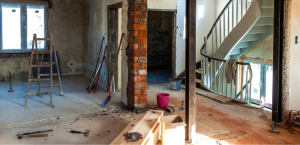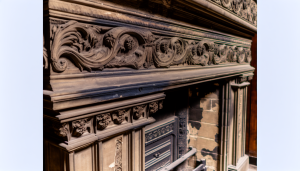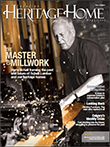A lifestyle beyond bricks and mortar
Where most home magazines stop at the facade, Heritage Home goes deeper–much deeper.
Heritage Home Canada’s only magazine catering to the interests to those living or interested in living in homes of historical or architectural note.
Our readers pay a premium to live in houses that creak with pipes that groan. To them, it is abundantly clear that a home is made up of far more than bricks and mortar. It is a perspective that we share.
Just as our readers are drawn to buildings that stand as a testament to the past, we are drawn to stories about the time periods that gave rise to the many different architectural traditions in Canada’s homes and historic neighbourhoods.
We also provide readers with information about the historic details of particular homes and communities, and offer guidance about how they discover more about their own home’s past.
Beyond this, we share practical advice valuable to anyone who seeks to preserve history within their own living spaces, including how-to advice on restoring, decorating and maintaining a heritage home without damaging its connection to the past.
Definition of Heritage Home
Think of the houses that pop up in suburbs–you can slice one in half, paint it in candy stripes and stick a canon in the chimney and no one’s going to care. But if you do the same thing to the arts and crafts bungalow down the road from our office people will picket in your driveway. You can’t do that–it’s a heritage home. Heritage homes aren’t defined by age. A heritage home, as far as we’re concerned, is one that captures the essence of a particular historical period. It’s more than a storage container for humans—its built with care, like a fine piece of art, and is treated respectfully by the people who live there today, so many years later. You don’t own a heritage home, you live with it and it lives with you. These homes give flavour to our neighbourhoods, beauty to our streets and direct portholes to the past. They deserve recognition and preservation.
Our Readers
Our typical reader is 45+, well educated, and belongs to a historical society. Of course, he/she lives in a heritage home. Our readers are married and, in fact, when an issue of Heritage Home lands on the doorstep both husband and wife make their ways through its pages. They are comfortable financially, through either an established career or spousal support, and have grown families. With basic pressures of survival out of the way, our readers find pleasure in literature, history and through their homes. People who live the Heritage Home lifestyle shouldn’t be confused with people who want the veneer, but not the depth and foundation. There is a marked difference between those who buy replica hardwood laminate and those who go out of their way to “pull, strip and dress” oak strip flooring. Our readers care what’s underneath.
Our readers don’t go to other home magazines for restoration advice; they go to their friends, heritage groups and their neighbours—people who’ve been through it themselves, people they can trust. They read Heritage Home because through us their pool of trust-worthy, knowledgeable neighbours stretches from St. John’s to Victoria. Our writers have been through the trials of the lifestyle themselves; they’re people our readers can trust.
Editorial
We’re not a stuffy magazine; the homes may be old but the windows are open and the gardens are fragrant. Our writing is light, easy to understand and has a sense of humour. We write Heritage Home for readers who are serious about their houses, enthusiastic about restoring and sensitive to period style and character. In our front and back sections we feature instructive, easy to understand pieces about how to deal with the quirks of living in heritage homes. Our features maintain sight of the front of book’s instructive values, but do so through the lens of the people who pass through, the history that takes place in and around heritage homes. Our features are what set us apart from anything you’ll find on the shelter magazine rack. They’re more akin to something you’d find in Harper’s than Canadian Country Living. They’re full-on literary narratives that will teach readers something they can use seconds after they set the magazine down and get back to living.







